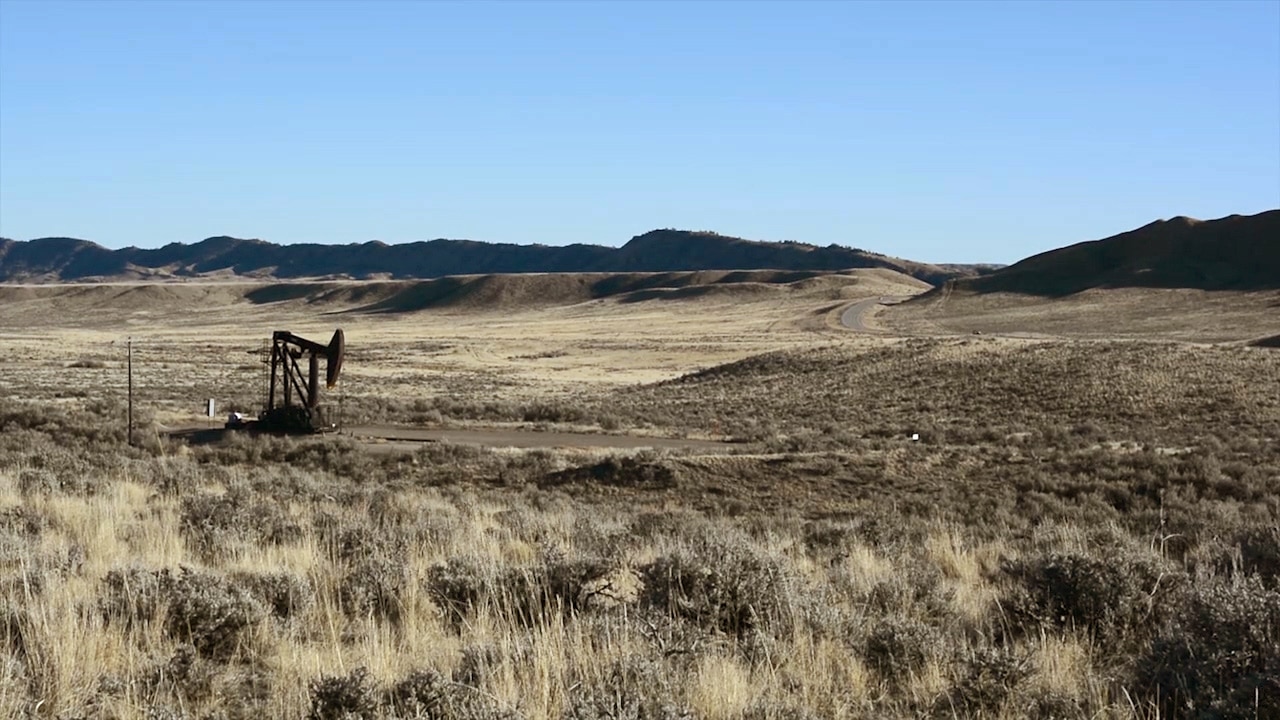| Table 1: Federal Biofuels and Biomass Subsidies | ||||
| Federal Agency/Farm Bill Title | Program/Tax Credit Name | Description | Types of Projects Receiving Subsidies | Estimated or Actual Costs** |
| U.S. Department of Agriculture (USDA) | ||||
| Agriculture – Commodity Title | Commodity Credit Corporation | Traditionally a fund reserved to pay out farm subsidies and farm loans, USDA also used CCC funds to subsidize ethanol | In May 2015, USDA announced CCC funding for ethanol blender pumps, which primarily benefit corn ethanol. | $100 million in 2015[8] |
| Commodity programs – Agriculture Risk Coverage (ARC), Price Loss Coverage (PLC), etc. | Farm programs that pay farmers for dips in crop prices or revenue (price x yield) over a certain time period | Subsidies for crops used in biofuel production – such as corn and soybeans – in addition to wheat, rice, peanuts, etc. | Total estimated cost of $9 billion in 2017[9] | |
| Agriculture – Crop Insurance Title | Federal Crop Insurance subsidies | Crop insurance premium subsidies for yield losses (due to natural disasters) or revenue losses (for dips in income as small as 15%) | Subsidies for crops used in biofuel production – such as corn, soybeans, sweet and biomass sorghum, alfalfa, pennycress, and sugarcane – in addition to wheat, rice, peanuts, etc. | Total estimated cost of $6 billion in 2017[10] |
| Agriculture – Energy Title[11] | Biomass Crop Assistance Program (BCAP) | Payments to individuals and companies for producing, harvesting, collecting, and transporting crops or feedstocks that can be used in bioenergy or biofuels facilities | Payments to establish crops, such as fast-growing trees or perennial grasses, in 11 approved project in addition to collection, harvest, storage, and transportation payments for the same types of biomass. | Mandatory funding of $25 million from FY14-18 |
| Bioenergy Program for Advanced Biofuels | Payments to advanced biofuels facilities to expand annual production | Over half of funding goes to mature corn ethanol and soy biodiesel facilities (even though corn ethanol is prohibited from receiving funding), with rest going to other types of biodiesel from animal fats, canola oil, used cooking oil, etc. | Mandatory funding of $15 million for FY14-18 and discretionary funding of $20 million annually | |
| Biomass Research and Development Initiative (joint program with DOE) | Grants for research, development, and demonstration projects for biofuels and biobased chemicals and products | Other than general R&D, feedstocks receiving the most funding include (ordered from most to least): woody biomass, sorghum, perennial grasses, vegetable oil, energy crops, algae, corn oil and corn starch, and MSW. | Mandatory funding of $3 million for FY2014-18 and discretionary funding of $20 million per year | |
| Biorefinery, Renewable Chemical, and Biobased Product Manufacturing Assistance Program | Grants and loan guarantees for advanced biofuels and heat and power facilities | Most loan guarantees go to woody biomass, followed by MSW, ag residues, perennial grasses, algae, and corn or soybean oil. | Mandatory funding of $100 million in FY14, $50 million in FY15 and FY16, and discretionary funding of $75 million for each year FY2014-18 | |
| Repowering Assistance Program | Reimbursements for biorefineries to replace fossil fuel power sources with biomass (like wood chips, municipal solid waste, or perennial grasses) | Two corn ethanol facilities received taxpayer funding to replace natural gas and fossil energy with a biomass boiler and a biogas digester. | Mandatory funding of $12 million for FY2014 to remain available until expended, plus $10 million annually from FY2014-18 in discretionary funding | |
| Rural Energy for America Program | Grants and loan guarantees for rural energy efficiency and renewable energy projects, including solar, wind, hydropower, geothermal, and biomass (and note that ethanol blender pumps also received subsidies from 2011-2014) | Projects receiving most subsidies include the following (in order from most to least): solar, energy efficiency and energy audits, grain dryers, anaerobic digester, wind, biomass, hydropower, irrigation, corn ethanol and blender pumps, “other,” geothermal, biodiesel, and tobacco. | $50 million in annual funding from FY14-18 and discretionary funding of $20 million for each of those years | |
| Agriculture – Rural Development Title | Rural Utilities Service Loans | Loans to provide or improve rural energy generation, transmission, or distribution, including rural energy projects such as solar, wind, hydropower, biomass, or geothermal.[12] | Biomass facilities converting wood into biofuels, heat, or power receive loans to “acquire, construct, extend, upgrade, and otherwise improve energy generation facilities;” 2012 loans were awarded to facilities in CO, HI, and TX/LA.[13] | At least $264 million awarded to woody biomass facilities in 2012[14] |
| Rural Business Enterprise Grants (RBEG) | Loans for rural economic development projects benefiting small and emerging businesses.[15] | Funds to “assist… businesses that produce biomass feedstocks for energy products and specialty chemicals” and “collect data on… woody biomass, the viability of a biomass pyrolysis process and the market for biochar.”[16] | $590,052 for biomass projects announced in Aug. 2010, Jul. 2013[17], Jul. 2015[18], & Sept. 2015[19], but due to lack of detail and info provided by USDA, total may be higher. | |
| Agriculture – Trade Title | Market Access Program | Market trade promotion program designed to expand agricultural exports | In FY17, the U.S. Grains Council received $6,670,888 for its overall trade missions, but the amount spent on ethanol specifically is unknown.[20]The Council notes that the Renewable Fuels Association and Growth Energy also accompanied it on ethanol trade missions, but these 2 organizations aren’t direct recipients of MAP subsidies.[21] | Unknown |
| Department of Defense (DoD) | ||||
| DoD | Defense Production Act funding | Joint project between U.S. Navy, DOE, and USDA to “construct and commission biorefineries capable of producing “drop-in” biofuels to meet the transportation needs of the military and private sector.”[22] | The three facilities – Emerald Biofuels, Fulcrum Bioenergy, and Red Rock Biofuels – receiving funding in 2014 planned to use waste fats, MSW, and woody biomass as feedstocks for drop-in biofuels.[23] | $210 million awarded in 2014[24] |
| Department of Energy (DOE) | ||||
| DOE | AdvancedResearch Projects Agency-Energy (ARPA-E) | “Applied research to outside organizations, such asprivate companies and academic institutions”[25] | “More than 87 percent of ARPA-E’s advanced biofuel R&D projects are funded as part of the Plants Engineered to Replace Oil (PETRO) program [which funds the conversion of plants into biofuels] and the Transportation EnergyResources from Renewable Agriculture (TERRA) program,” which most recently funded sorghum-based biofuels. [26] | $57.9 million from FY13-15[27] |
| DOE | Bioenergy Technologies Office | Aside from R&D, office also offers funding for “Pilot- and Demonstration-Scale Manufacturing of Biofuels, Bioproducts, and Biopower”[28] | Eligible projects include: “manufacturing of advanced or cellulosic biofuels, bioproducts, refinery-compatible intermediates, and/or biopower in a domestic pilot- or demonstration-scale integrated biorefinery;” most recent projects use woody biomass, industrial waste gases, algae, MSW, industrial wastewater, etc. as feedstocks.[29] | $397.5 million from FY13-15[30] |
| DOE | Clean Cities Program | Provides “informational, technical, and financial resources to EPAct-regulated fleets and voluntary adopters of alternative fuels and vehicles” in nearly 100 U.S. cities.[31] | Works with national parks, municipalities, and state-based incentive programs to promote greater consumption of alternative fuels and the installation of new fueling equipment, including 85 percent ethanol (E85) blender pumps. | At least $380 million spent on grants for infrastructure and alternatively fueled vehicles (ethanol and biodiesel), from 2009-17.[32] |
| DOE | Loan Guarantee Program – Title XVII | Provides loan guarantees to various energy projects, including nuclear, coal, energy efficiency, or renewables (wind, solar, geothermal,or biofuels). | While only one biofuels loan guarantee has been finalized, at least 8 other projects (ranging from those for corn stover cellulosic ethanol to woody biomass-based biofuels) have been considered for taxpayer-backed loans. In particular, ethanol producer POET withdrew its application after being approved for a DOE loan guarantee. | $132.4 million loan guarantee finalized in Aug. 2011 for corn stover cellulosic ethanol facility, but Abengoa later went bankrupt.[33] |
| DOE | Office of Science | External R&Drelated to advanced biofuels at three bioenergy research centers[34] | According to GAO, although DOE continues “toinvestigate cellulosic ethanol, drop-in fuels are more desirable because they are compatible with current engine designs and fueling
infrastructure.”[35] |
$424.1 million from FY13-15[36] |
| DOE | State Energy Programs (SEP) | “Provide financial and technical [energy] assistance to states through formula and competitive grants”[37] | Grants have been awarded for the installation of E85 blender pumps, alternative power sources for ethanol biorefineries, and ethanol promotional events. | $3.1 billion of total SEP funding to U.S. states under the 2009 American Recovery and Reinvestment Act (stimulus) legislation |
| DOE | Vehicle Technologies Office | “In-house and external R&D related to advanced biofuels,focusing on end-user considerations”[38]such as alternatively fueled vehicles and effects on engines. | “Collaborating with Cummins engine company to develop a compression ignition enginecapable of running on ethanol”[39] | $10.9 million from FY13-15[40] |
| U.S. Treasury – Tax Code | ||||
| U.S. Treasury | Alternative Fuel Mixture Excise Tax Credit* (another similar credit is the Alternative Fuel Excise Tax Credit) | $0.50/gallon “of alternative fuel used to produce a mixture containing at least 0.1% gasoline, diesel, or kerosene.”[41] | “Qualified alternative fuels are: compressed natural gas…, liquefied natural gas, liquefied hydrogen, propane, P-Series fuel, liquid fuel derived from coal through the Fischer-Tropsch process, and compressed or liquefied gas derived from biomass,”[42] or liquefied fuel derived from biomass.[43] | Estimated cost of $794 million in 2016.[44] |
| U.S. Treasury | Alternative Fuel Vehicle Refueling Property Credit* | Facilities dispensing certain alternative fuels can receive a refueling property credit in the form of a 30% tax break | Eligible facilities include gasoline stations, those installing biodiesel or 85% ethanol (E85) blender pumps, or repowering sites for electric vehicles. Stations dispensing natural gas, liquefied natural gas (LNG), and liquefied petroleum gas (LPG) are also eligible.[45] | Estimated cost of $100 million per Fiscal Year (as projected by the Joint Committee on Taxation in 2016).[46] |
| U.S. Treasury | Master Limited Partnerships (MLP) | “An MLP is typically a limited liability company (LLC) treated as a partnership for taxation purposes and traded on a public exchange… By avoiding double taxation, MLPs have access to lower cost of capital…”[47] | Of the 100 entities benefiting from the MLPs’ special tax treatment, most are in the oil and gas industry, but in 2008, the transportation and storage of ethanol, biodiesel, and other alternative fuels also became eligible.[48] | Total projected cost of $9.8 billion (for FY16-25)[49] |
| U.S. Treasury | Renewable electricity production tax credit for biomass* | $0.023/kWh for closed-loop biomass facilities not claiming the investment tax credit and $0.012/kWh for open-loop biomass facilities[50] | Closed loop biomass feedstocks can be “any organic matter from a plant which is planted exclusively for purposes of being used at a qualified facility to produce electricity” while closed loop feedstocks include: “agricultural livestock manure and litter, including wood shavings, straw, rice hulls, and other bedding material for the disposition of manure.”[51] | $1.2 billion projected cost for closed-loop biomass and $100 million for open-loop biomass (from FY16-20)[52] |
| U.S. Treasury | Second generation biofuel (cellulosic) producer tax credit* (cellulosic producers also receive special tax depreciation allowances) | $1.01 per gallon producer tax credit | “Liquid fuel produced from any lignocellulosic or hemicellulosic matter that is available on a renewable basis or any cultivated algae, cyanobacteria, or lemna,” such as cellulosic ethanol derived from corn kernel fiber, ag residues, perennial grasses, etc.[53] | Estimated cost of $487 million from 2017-26, given projected production levels from the Energy Information Administration (EIA) and assuming the tax credit is extended each year.[54] |
| U.S. Treasury | Volumetric Biodiesel Excise Tax Credit andRenewable Biodiesel Tax Credit* | Biodiesel income tax credit of $1 per gallon | Eligible feedstocks include “virgin oils, esters derived from corn, soybeans, sunflower seeds, cottonseeds, canola, crambe, rapeseeds, safflowers, flaxseeds, rice bran, mustard seeds, and camelina, and from animal fats.”[55] | Estimated cost of $21 billion from 2017-26, given projected production levels from EIA and assuming the tax credit is extended each year.[56] |
| Department of Transportation (DOT) | ||||
| DOT | Congestion Mitigation and Air Quality (CMAQ) Improvement Program | Supports “surface transportation projects and other related efforts that contribute air quality improvements and provide congestion relief”[57] and is administered by the Federal Highway Administration and the Federal Transit Administration. | The City of Hoover received funding through the Alabama Clean Fuels Coalition for a new E85 tank and dispenser at its Public Safety Center.[58] | Unknown amount spent on ethanol projects.[59] |
| DOT | Biobased Transportation Research Program/Sun Grant Initiative | Partnership among DOT, USDA, and DOE to advance bioenergy research and foster collaborations in the field and among industry leaders.[60] | Supported 5 land-grant universities to research bioenergy, in addition to providing regional grants to various bioenergy projects. | Initiativewas not reauthorized in the 2012 transportation bill, but
DOT funding was available through 2016. |
| * Note that these tax credits (for biodiesel, cellulosic biofuel, and the alternative fuel refueling property credit) expired at the end of 2016, but they have a history of being extended from year to year.** Cost estimates are primarily from the Joint Committee on Taxation, Government Accountability Office, and the Congressional Budget Office. Farm bill energy title program costs are those set in statute through the 2014 farm bill. | ||||
| Table 2: Types of Biofuels Mandated in the RFS | ||||
| Type of Biofuel | Annual Production Mandate by 2022 | Definition of Biofuel | Examples | Minimum Reduction in Greenhouse Gas Emissions |
| Conventional ethanol | 15 billion gallons/year | Ethanol derived from corn starch | – Corn starch ethanol | 20%, but due to a grandfathering clause, nearly every ethanol facility was able to circumvent this minimal requirement |
| Advanced biofuels (subdivided into other categories – see advanced biofuels table definitions) | 21 billion gallons/year | “Renewable fuel, other than ethanol derivedfrom corn starch, that has lifecycle greenhouse gas emissions (GHG) that are at least 50% less than baseline GHG emissions” | – Cellulosic ethanol– Ethanol from non-corn feedstocks such as sugar
– Ethanol from waste materials such as crop residues, food waste, animal waste, etc. – Biodiesel from soybeans, other vegetable oil, animal fats, etc. – Biogas from landfills – Butanol from renewable biomass such as corn (approved for a certain facility in MN – Gevo) |
50% |
| Table 3: Types of Advanced Biofuels Mandated in the RFS | ||||
| Type of Biofuel | Annual Production Mandate by 2022 | Definition of Biofuel | Examples | Minimum Reduction in Greenhouse Gas Emissions |
| Cellulosic ethanol | 16 billion gallons/year | Renewable fuel derived from any cellulose, hemicellulose, or lignin | – Ethanol produced from agricultural residues (corn stover for instance), forest residues, food or municipal solid waste, perennial grasses, etc. Note that corn kernel fiber cellulosic ethanol was also approved by EPA. | 60% |
| Biomass-based diesel | At least 1 billion gallons/year, set annually by EPA | Biodiesel produced from vegetable oil or “a diesel fuel substitute produced from nonpetroleum renewable resources [including] animal wastes, including poultry fats and poultry wastes, and other waste materials, or municipal solid waste and sludges and oils derived from wastewater” | – Biodiesel produced from soybeans, other vegetable oil, algae, animal fats, used cooking oil, etc.– Other diesel fuel substitutes produced from municipal solid waste, animal wastes, etc. | 50% |
| “Other” advanced biofuels | 4 billion gallons/year | Any other fuel that meets the definition of an “advanced biofuel” | – Ethanol from non-corn feedstocks such as sugar– Butanol from renewable biomass (including butanol
derived from corn, which was recently approved by EPA for a certain facility – Gevo – May also include biomass-based diesel (see above) |
50% |










